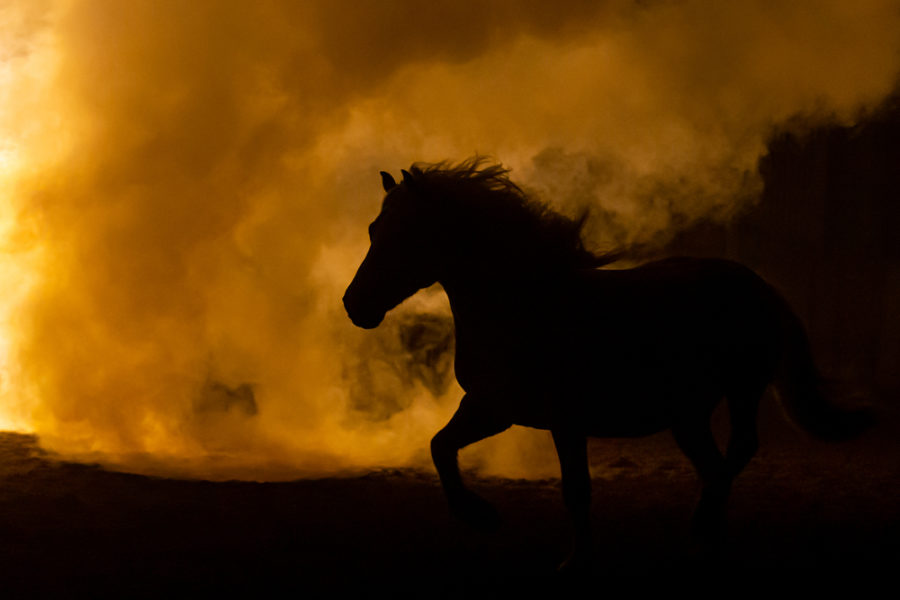Due to the tragic wildfires spreading across the west, many caretakers are struggling to protect their horses from smoke inhalation. Stimulating these acupressure points can help support equine respiratory health.
We have to help our animals breathe during this tragic time of horrendous fires in the western United States. The smoke-filled air is traveling around the globe and so many animals are being affected because they have no choice – they have to breathe to survive.
There are three super respiratory acupressure points, also called “acupoints,” that you can stimulate to support your horses’ respiratory health right now!
How to help your horses’ breathing
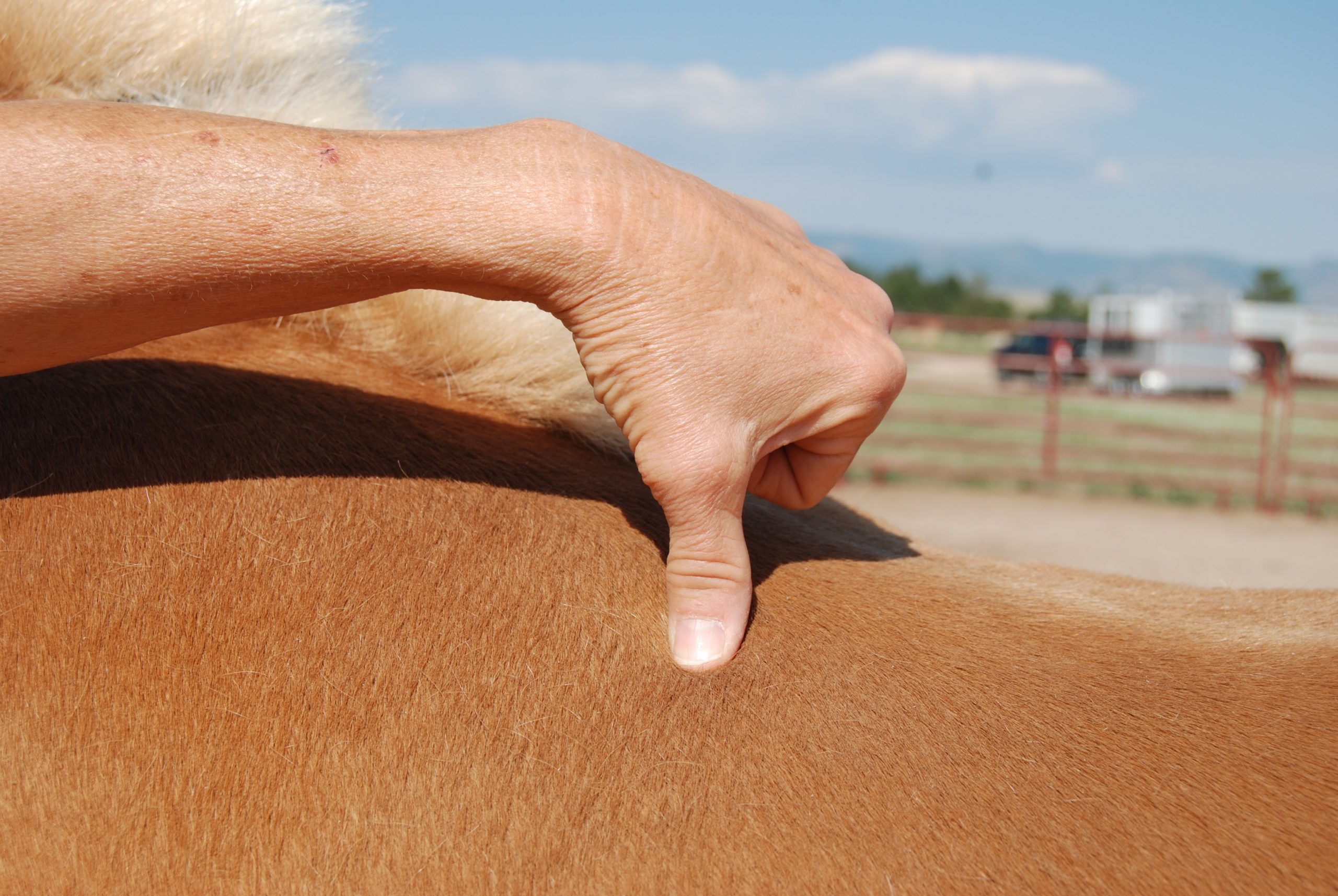
Apply light pressure, yet with a sense of intention, using the soft tip of your thumb on the acupoints shown in the photo charts below. Where it’s more comfortable, place your middle finger on top of your pointer finger to make a little tent and then apply pressure using the soft tip of your pointer finger on the acupoint.

Apply pressure on an acupoint for at least a slow count to 30 or until the horse demonstrates an energy release, then move to the next acupoint. A horse exhibits an energy release by exhaling forcefully, shaking, passing air, or falling asleep. When you have progressed through the acupoints on one side of the horse, repeat on the opposite side.
Always have two hands on the horse. Rest the hand not offering the point work comfortably on the horse. The purpose of resting your hand on the horse during point work is for you to feel any reactions and for the horse to feel grounded.
Respiratory support acupressure session
Each of the acupoints selected for this respiratory support session are known to strengthen, clear, and optimize lung function. During the worst of the smoke in your environment you can offer your horses this session every day or as often as you can. As the smoke subsides, reduce to every third day. As it clears, once a week will support your horse’s lung function.
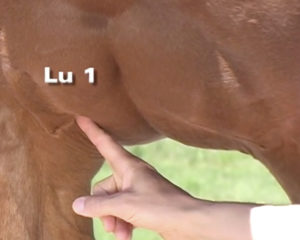 1. Lung 1 (Lu 1)
1. Lung 1 (Lu 1)
This acupoint is located on the horse’s chest. Access Lu 1 from the front of the horse. First find the manubrium (the most forward point of the horse’s sternum). Slide down the descending pectoral muscle to about the center of the muscle, and feel for a soft spot.
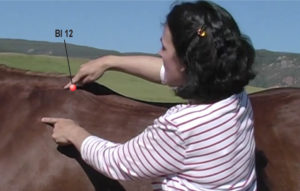 2. Bladder 12 (Bl 12)
2. Bladder 12 (Bl 12)
Bl 12 is found on the top of shoulder halfway between the scapular cartilage and the top of the withers just below T4–T 5.
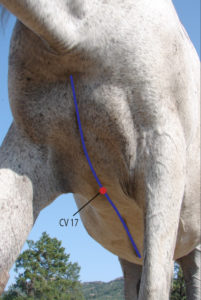
3. Conception Vessel 17 (CV 17)
This point is located on the ventral midline at the level of the point of the elbow. Feel for an indent on the horse’s sternum.
Our horses’ health, quality of life, and ability to perform are completely dependent on their lung function. The more you can do to support their respiratory health amid the wildfires, the better and happier you and your horse will be.

